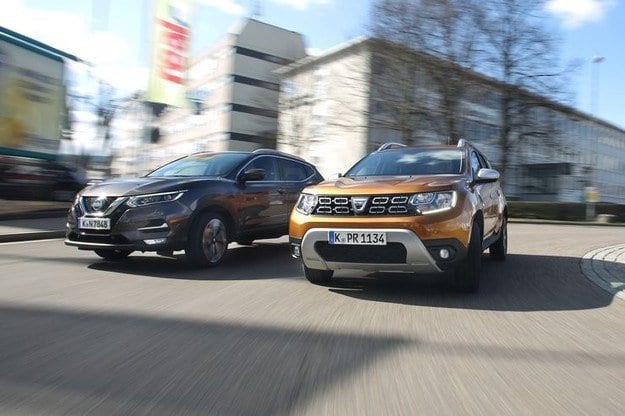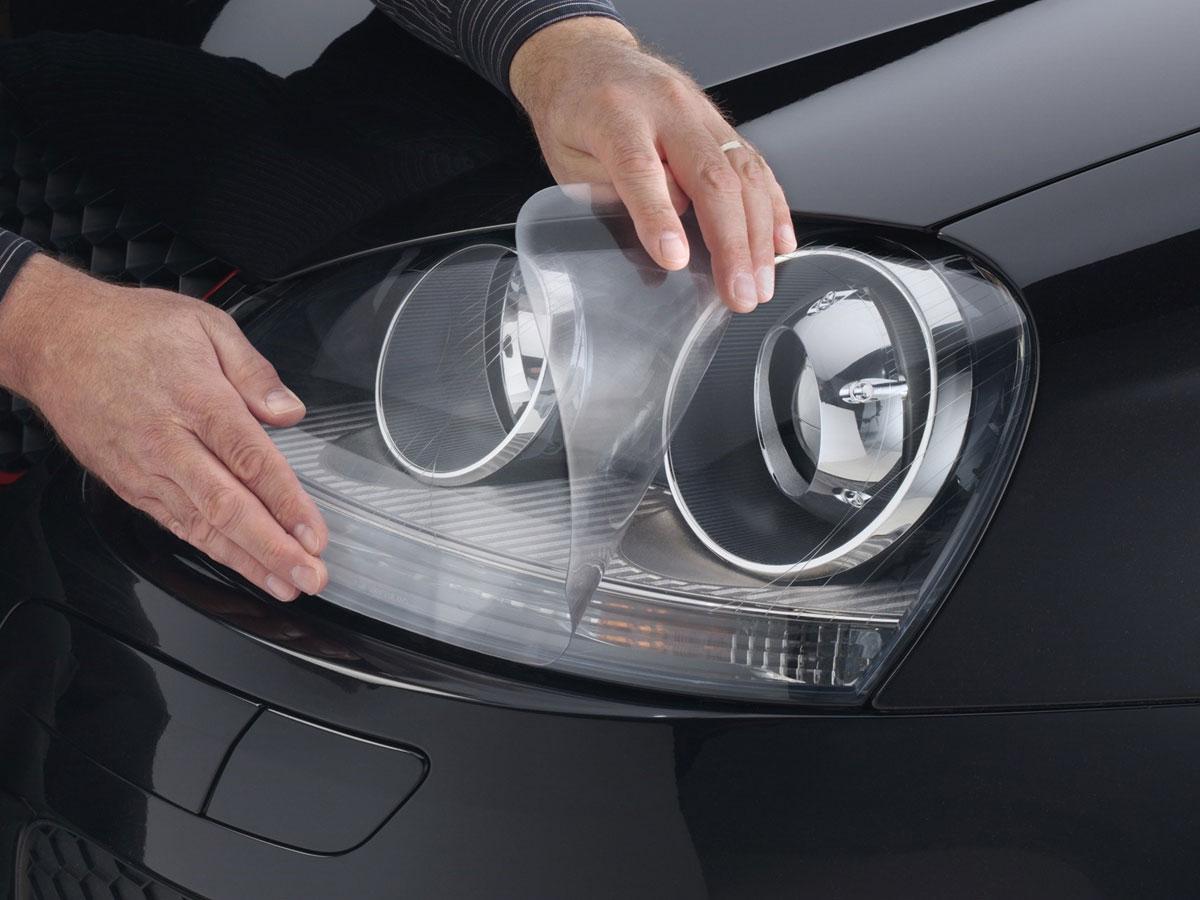
Test drive Dacia Duster DCI 110 4X4 vs Nissan Qashqai 1.5 DCI: test
Content

Compact SUV models of different price categories with the same four-cylinder diesel engines
With what is an expensive Nissan better than a cheap Dacia and what justifies the difference in price of at least 4790 euros? We looked at the Duster and Qashqai, both powered by the tested 1,5-liter diesel, under a magnifying glass.
Apparently, the abbreviation K9K means nothing to you. Unless you're a very Renault insider. Then you might know that we are talking about a 1,5 dCi diesel engine that has been in production for almost 20 years and has a circulation of over ten million units. One of them is hidden in the engine bays of the Dacia Duster dCi 110 4×4 and Nissan Qashqai 1.5 dCi involved in this test. But on this, the similarities between the two cars are almost exhausted. Not only are the prices of the two compact SUV models as far apart as the factories where they are made - the Romanian one in Pitesti (Dacia) and the English one in Sunderland (Nissan).
Cheap Dacia
So let's start with money. Dacia Duster is available in Germany starting at €11; The test car with few additional options and the highest level of equipment costs about 490 euros more, to be exact, it costs 10 euros. At least another 000 will be required if you decide to buy a Qashqai tester. With Tekna equipment, the Nissan people are offering it for 21 euros. However, the choice does not include a dual transmission - it is only available in combination with a 020 hp 10 dCi engine.
And one more difference: while the Duster in this year's second-generation model is based on the B0 Group small car platform, the Qashqai is based on the larger P32L. The Nissan model is about five centimeters longer, and when you're inside, it looks even bigger. It just seems like the room is more spacious. The measured values confirm the subjective impression: the inner width is about seven centimeters larger – the difference between the two vehicle classes. The difference in cargo volume is slightly smaller, but here again Nissan is one idea better.
In general, the new generation Duster has changed very little. This applies, for example, to external design; here, probably, only Dacia specialists will immediately notice the differences. The new model even inherited a weakened mechanism for adjusting the height of the driver's seat, as a colleague joked after a test drive. On the one hand, this is true, but on the other hand, it is a bit unfair. Because the Dacia now has a slightly more comfortable ratchet for vertical adjustment. It is still uncomfortable to hold the longitudinal adjustment lever.
All this becomes much easier at Nissan. The power seat adjustment mechanism is included in the € 1500 leather upholstery package. It also includes two comfortable front row seats that are significantly more comfortable and have better lateral support than those available in Dacia. Although now "Duster" is furnished much more comfortably and of better quality than before, here and in other details the economy to which its creators were subjected is obvious. For example, in rather modest front and rear seats with small dimensions. There has long been a debate over whether or not Dacia seats are worth using throughout the vehicle's lifespan, but buyers shouldn't make any compromises when it comes to safety.
Extensive equipment of the Nissan model
The new Dacia Duster, for example, like its predecessor, boasts just three Euro-NCAP stars. Including because, from the point of view of driver assistance technology, this is yesterday's car.
By regulation, it has ABS and ESP, has blind-spot warning, and even brakes a little better than the Nissan Qashqai. However, good measurement results are only part of the truth. When braking at high speeds, the Duster behaves stubbornly, does not follow the direction steadily and therefore requires the driver's full attention. Otherwise, it offers almost no systems that make driving modern cars safer and more enjoyable. It's impressive even when we compare it to a model like the Nissan representative, which isn't very well equipped in this regard. At the Tekna level, it comes standard with the Visia Assistant Package, which includes Lane Keeping Assistant, Front and Rear Parking Assist, and Emergency Stop Assistant with pedestrian recognition, among others. For 1000 euros, the so-called Safety Screen with crossroad alert, blind spot warning, parking assistance and driver fatigue detection. By comparison, the new Dacia now looks outdated – partly because it still lacks high-tech lighting. Its headlights glow with H7 bulbs, while the Qashqai Tekna glows with standard adaptive LED lights.
However, the Duster also has good points, such as suspension comfort. Although the chassis is quite soft and allows for more movement than the denser Nissan, it is better prepared for serious impacts. In addition, the Duster is shod with softer 17-inch tires.
All in all, Dacia offers an SUV that tolerates harsher handling and more challenging terrain. Not only thanks to the double transmission. Although it lacks a true differential lock, the power distribution between the front and rear axles can be locked between 50 and 50 percent using a rotary switch in the center console. So the Duster gets off the paved roads well enough, it still features the dual-transmission system of the first Nissan X-Trail. In the version with this engine, as already mentioned, the Qashqai is only available with front-wheel drive. On hard surfaces, this is not necessarily a disadvantage; while driving, the car looks a little more lively with two driving front wheels. It is much more willing to corner, and with its more precise and more generous feedback, the steering system better follows the desired course, without the slightest suspicion that it is a miracle of handling.
Such a thought can only arise in comparison with the Dacia, which in general gives the impression of a much more clumsy behavior - one of the reasons for this is that in the corners it leans sharply and at a large angle. The Romanian's steering is more indirect, conveys a slight feel of what the front wheels are doing, and has very light and undefined travel for a rough car of this type.
More noise in Duster
It can be assumed that few buyers will prefer Duster or Qashqai due to skillful cornering. In diesel models and in the Duster price category, the cost of powertrains should play a decisive role. Here, the more economical Nissan turns out to be more talented, the consumption of which in the test is almost a liter lower. However, he is not forced to carry the rear drive axle. Differences in the dynamic characteristics of the two models of SUVs are not particularly large - 0,4 seconds at acceleration to 100 km / h and 13 km / h at maximum speed is not serious. However, the difference in performance between the two motorcycles is even more impressive.
In the Nissan model, the 1,5-liter diesel runs smoothly and quietly. He starts work decisively, but not too violently. You rarely feel the desire for more strength or elasticity. Basically, the same diesel in Dacia behaves completely differently. Here it makes a slightly excruciating and much louder noise and seems significantly heavier, despite the shorter main gear. In addition, the transmission with an ultra-short "mountain" first gear works indistinctly and slightly wedges. By the way, you can easily enter everyday life for a second.
Text: Heinrich Lingner
Photo: Hans-Dieter Zeifert
Evaluation
1. Nissan Qashqai 1.5 dCi Tekna – 384 points
The Qashqai wins this comparison with significant superiority because it is a much better vehicle with safer handling, more responsive steering and better quality.
2. Dacia Duster dCi 110 4×4 Prestige – 351 points
Despite some improvements, flaws in settings and safety equipment leave no doubt that the Duster has one essential quality in the main - a low price.
technical details
| 1. Nissan Qashqai 1.5 dCi Tekna | 2. Dacia Duster dCi 110 4×4 Prestige | |
|---|---|---|
| Working volume | 1461 cc | 1461 cc |
| Power | 110 k.s. (81 kW) at 4000 rpm | 109 k.s. (80 kW) at 4000 rpm |
| Maximum torque | 260 Nm at 1750 rpm | 260 Nm at 1750 rpm |
| Acceleration 0-100 km / h | 11,9 with | 12,3 with |
| Braking distances at a speed of 100 km / h | 35,7 m | 34,6 m |
| full speed | 182 km / h | 169 km / h |
| Average consumption fuel in the test | 6,1 l / 100 km | 6,9 l / 100 km |
| Base Price | 31 200 EUR (in Germany) | 18 900 EUR (in Germany) |
Home " Articles " Blanks » Dacia Duster DCI 110 4X4 vs Nissan Qashqai 1.5 DCI: test

